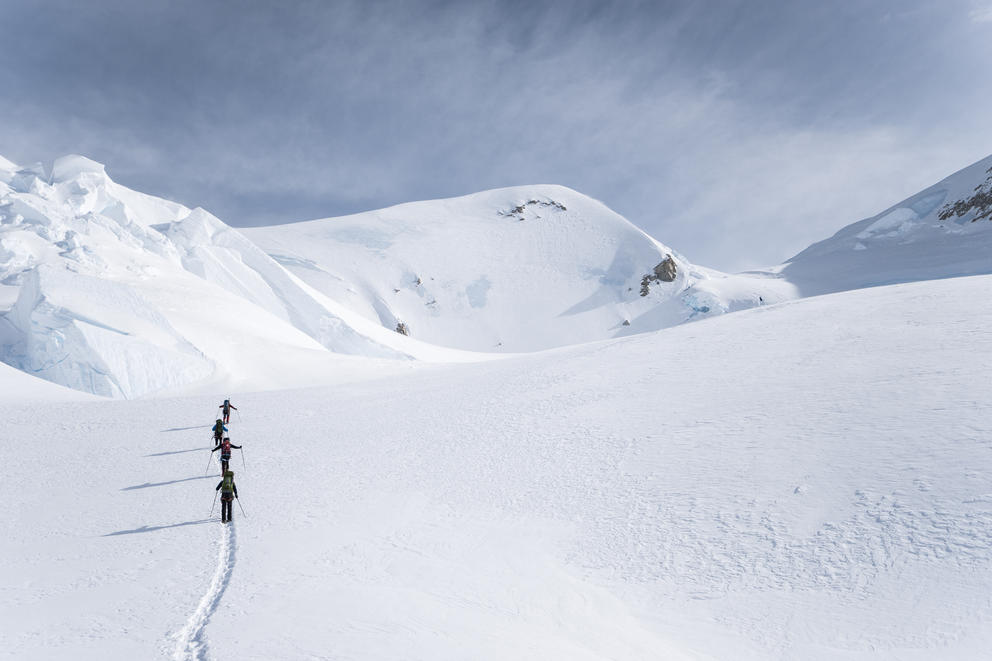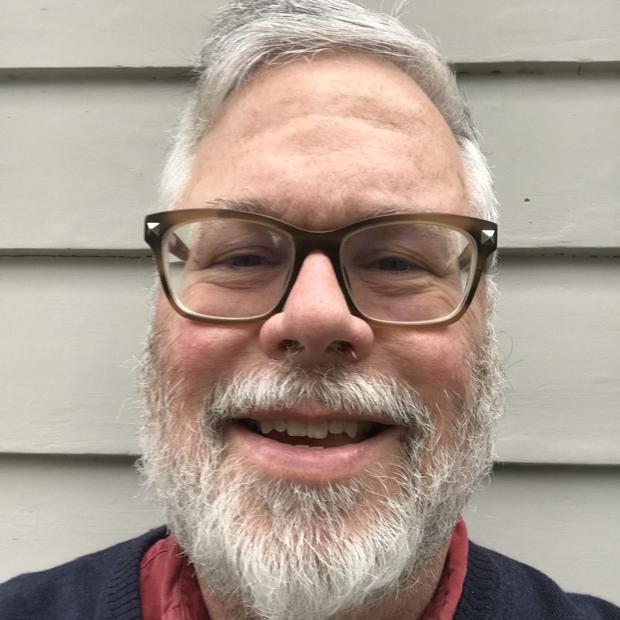Return to Mount Kennedy is the story of the 1965 ascent of the newly named peak in the Yukon by Seattle mountaineer Jim Whittaker (the first American to summit Everest) and Senator Robert F. Kennedy who wanted to pay tribute to his brother, John F. Kennedy, for whom the mountain was named. It’s also the story of three sons — Bob Whittaker, Leif Whittaker and Christopher Kennedy — who made a 2015 attempt on the peak to commemorate the 50th anniversary of the 1965 climb.
The film includes contemporary interviews with various Whittaker family members and an original score by Eddie Vedder. It touches on father-and-son relationships, the feverish politics of the late 1960s, the 1968 assassination of Bobby Kennedy, the early seeds of the environmental movement and the mapping of some of the last uncharted terrain in North America.
Director Eric Becker deftly crafts all those concerns into a compact, cohesive 80-minute narrative. The film is poignant, informative, eye-popping in its cinematography and unexpectedly humorous thanks to the clowning of Bob Whittaker, a one-time roadie for Mudhoney and R.E.M.
Becker grew up in Texas, moved to Seattle in 2008 and now lives in Boise.
“I’m one of the economic refugees from Seattle,” he said in a phone interview last week. “I still kind of claim Seattle as my town. I visit there once or twice a month.”
Here’s a condensed, edited version of our phone conversation.
How did you become aware of the Jim Whittaker-Bobby Kennedy connection?
I made a short film about Jim Whittaker in 2013. Bob Whittaker saw that and gave me an email out of the blue. He said, “Hey, really great piece. Let me know if you want to hang out sometime.” So, we became friends. He’d had this kind of idea of Mount Kennedy — doing a climb, visiting the area — percolating in his brain. We came up with the idea of putting together an expedition and making a film. At the time, we thought it was going to be a short little piece. But then the more that I got into the history and the more that I learned about the relationship between Jim and Bobby, the more I realized that it needed a formal treatment as a feature-length film and that there was a lot of digging to do to unpack the emotions surrounding both the climb and the assassination.
You’re too young to have any memory of the RFK assassination, aren’t you? Did you even have much sense of who Bobby Kennedy was?
I’m 38. So, it obviously happened before I was even a twinkle in my parents’ eye. I knew some things about Bobby. I knew he was assassinated. I knew the name of the guy that assassinated him. But I didn’t really know that much about him. And I think a lot of people in my generation don’t know a lot about Bobby Kennedy. They know his name. They know he was assassinated. But they don’t really know what he stood for, his political message and a lot of the events surrounding that time period.
In your film, on the 1968 campaign trail, Kennedy says, “I run to seek new policies — policies to close the gap that now exists between Black and White, between rich and poor, between young and old, in this country and around the rest of the world.” On environmental concerns, he proposes, “There are laws that we can pass about dumping and throwing refuse in lakes and streams and into the air. And I think that’s what’s going to make the difference in this country.” As Jim Whittaker points out, when you talk to him, “That was not in the American consciousness in the 1960s.” Were you surprised at how those issues from 50 years ago still feel urgent today?
I don’t feel surprised. Issues facing the environment are worse today than in 1965. Becoming acquainted with Bobby Kennedy’s message was a good reminder that the fight goes on.
This is your first feature-length documentary. What kind of background do you bring to these subject matters? What were the areas you were most familiar with and the areas where you really had to stretch?
Physically, doing the climb was challenging. I’m not a mountaineer. I’ve done some stuff on Mount Rainier, but I’ve never summited. I’ve always been into camping, but this was a new thing for me: gearing up and tying knots and being in negative-25-degree weather and 45-mile-an-hour winds. That was the biggest challenge for me. Being a filmmaker, you learn how to educate yourself, I guess, in whatever subject matter you’re covering. So, I didn’t feel like it was at any time an overwhelming amount of information in the realm of politics or history or music. It all just kind of came naturally. The tricky part really was weaving it all together because there’s so many different themes and narratives.
A lot of that weaving had to come in the editing room. Were you the editor of the film as well as the director?
I worked with an editor. His name is Andrew Franks. But it was very much a collaboration.
The re-ascent took place in 2015, three years ago. Was that how long it took to wrestle the film into the form you were after?
We climbed in May of 2015. Then I got married in September of 2015. We found out we were pregnant the day after the wedding. And then we moved to Idaho. And then, you know, I have to pay the bills, so I have corporate work I do to keep the lights on. There definitely was some stuff that happened along the way in life that slowed it down. It wasn’t like we were working on it every day for three years. But there’s this strange thing that happens when you kind of wait for these stories to unfold. There was footage that came up within the last six months of work on the project. Like the eulogy that Jim Whittaker gave for Bobby Kennedy in the film — we didn’t find that until, like, three months ago. Jim Whittaker found it in his garage in a pile of stuff. He called up Bob Whittaker and said, “Hey, I found this reel. It says ‘Kennedys’ on it. Do you want to look at it?”
I understand the grunge-era footage came from Matt Lukin, the bassist for Mudhoney.
They had forty hours of stuff that was sitting in Matt Lukin’s attic that we digitized. We didn’t do that until a year ago. It takes time to dig through these things, to figure out how to piece it all together. This was the most challenging edit that I’ve ever undertaken.
If you’re 38, you’re probably too young to be an original grunge fan. You would have been 12 or so, right?
Even though I was 12 years old, I was a huge Nirvana fan. I was a huge Mudhoney fan. I was a huge Pearl Jam fan. I had two different situations where I was at Eddie Vedder’s house, showing him pieces of the film and doing the interview with him, which was very surreal. To have one of these guys who was, like, a musical hero of yours giving you music for your film was a career-defining moment. He’s really good friends with Bob. I mean, they’re buddies. I didn’t know how connected Bob was to the grunge world until we really started to edit the film.
Usually mountaineering films don’t have much humor in them. But with Bob Whittaker you have a court jester on hand. He has that wisecrack about the 2015 expedition “swimming in mystique and drowning in personalities.” A little later, when Christopher Kennedy runs into trouble on the ice, he jokes, “Every fifty years we like to drop a Kennedy in a crevasse on Mount Kennedy, just for fun.” You make good use of him. Did you know you’d be getting that dynamic when you started the film?
I knew I wanted to focus the film on Bob because he’s so funny, and I knew that would provide some release from the heavy topics. I’ve been to a lot of adventure film festivals. That’s kind of my filmmaking community. But I’ve never been a hardcore mountain guy, so I’m never going to make a film like “Meru.” And I’m not really interested in making a film like that because I like these human stories about relationships and politics and history. My goal was to use an adventure as a platform to explore those emotions within the piece.

Bobby Kennedy is a figure from before your time. What was the most startling thing you learned about him while making the film?
Just the fact that Bobby Kennedy was willing to go do that climb was impressive. He had no experience in the mountains. I think the biggest takeaway that we all had, and it’s referenced in the film, was just how tough those guys were to pull that climb off. You know, it’s not a technical climb. The last pitch is steep and technical, with some exposure. But it’s a lot of walking and it’s at a high elevation.
There’s also the fact that, in the film, it’s revealed that Bobby Kennedy was scared of heights.
Yeah — so am I. I’m terrified of heights.
How did you handle that? You didn’t make it to the final peak where the ridgeline falls away steeply on either side. But still.
I’ve spent a lot of time on Jim Whittaker’s message that things happen when you take risks. And fear, just fear, you learn to deal with it. It’s good for you. I was completely prepared to do that last stretch. I knew what I was getting into. It’s also terrifying to have this film that I have to show to people now who are going to judge my work. And I’m ready for it. Good things happen when you put yourself out there.
If you go: Return to Mount Kennedy screens on June 2 at the Kirkland Performance Center and June 9 and 10 at SIFF Uptown. Director Eric Becker will attend all three screenings.



